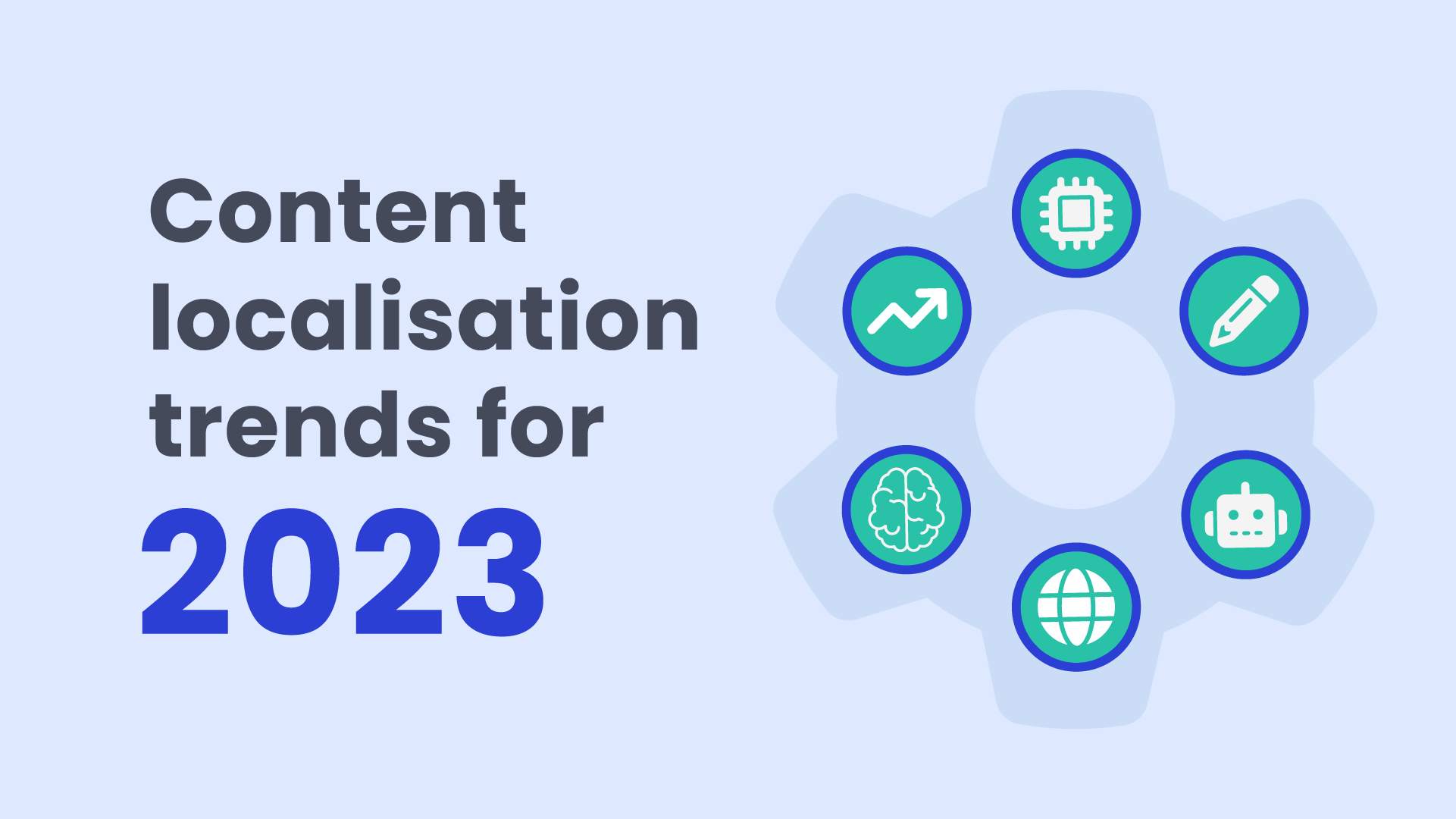Content Localisation Trends for 2023
Dec 20, 2022 2:40:39 PM | 3 min | Localisation strategy
Content Localisation Trends for 2023
A lot has been happening in the world of content translation and localisation. As the year is coming to an end, we are excited to look into a promising-looking future. In this article, I will present the four biggest content localisation trends we have been spotting. Grab yourself a hot beverage, get cosy and let’s find out which tools will help us create and localise content faster and easier in 2023.
AI content generation
Before you can start localising your content you have to write it. That writing process can take hours and leave your brain mushed at the end of the day. Using AI to generate content removes the stress of copywriting. Instead of staring at a blank page and wondering what the heck you’re gonna write about, such technology can produce high-quality content within minutes.
It is almost uncanny how good such tools have become recently. Artificial intelligence is now capable of generating unique and engaging content for SEO-relevant blog posts, social media content, and emails, rewriting your existing content or creating new website content. Now, that doesn’t mean that you have to fire all your copywriters. On the contrary, AI helps them with a push start and your employees can edit the content to give it that last polish.
If you are looking for areas to rely on AI, we find that content generation tools are incredible at giving you a head start at writing blog posts, drafting business emails as well as creating marketing and social media copy. Generative AI is especially valuable for summarising different kinds of texts and making bullet points with key takeaways.
All you have to do is type in your command, also known as a prompt, and you can instantly watch AI write out your content. We summarised the best tips for effective prompts in another article that will help you generate the exact content you are looking for.
All in all, getting over writer’s block and creating content fast and effortlessly can be an absolute lifesaver.
Custom machine translation
Another trend we have been noticing where AI steps in to produce multilingual content in a fast manner is custom machine translation. This technology lets you reduce the human editing efforts of translations and lets you get away with more fully machine-translated content.
While traditional machine translation is based on generic big data and allows for wide dictionary coverage it can also lack specificity. This is where custom machine translation comes in. It uses your own domain-specific data to translate in line with your business’ unique tone of voice and specific terminology.
Suppose you are planning to rely on custom machine translation without any human involvement at all. In that case, you can do that with supporting content, such as product descriptions, knowledge base articles or data sheets.
But no matter if you want to use it on its own or in combination with a translator, custom machine translation can save you a tremendous amount of time. You need to spend less money on human translations and can expect faster time to market and turnaround time.
Integrations
The third content localisation trend we have been loving is integrations. Integrating your translation apps into your CMS, PIM and other systems let you instantly send and receive translations.
We know that reaching an international audience through your multilingual website can be tricky and time-consuming. Using integrations for your systems such as WordPress, Magento, Shopify, Shopware or even Zapier, Github or Episerver makes this so much easier and faster.
With the right translation app, you don’t even have to leave your systems. You will be able to trigger and receive translations automatically. Once you have set off your content for translations, translators will get notified instantly and can get straight to work. As soon as they are done, you will receive the translated content in the right spot, ready to go live.
We believe that implementing this trend shouldn’t require a developer to set up the integrations. Instead, simple no-code plugins are what you should look out for.
Automation and continuous localisation
The last big trend we predict for 2023 is automating content localisation processes to enable continuous localisation. Linking your content localisation processes with your development processes allows for the simultaneous release of the text in its original language as well as in your other target languages. This trend is about making sure that your content is always localised without any downtime.
Everyone knows the struggle of regularly updating content in order to stay relevant and compliant. It can become a challenge for developers when dynamic content constantly needs to be updated and implemented in multiple languages. Relying on the continuous localisation strategy eliminates routine and bug-fixing tasks that would otherwise take up a lot of valuable time.
Continuous localisation can be achieved by utilising tools to automate your workflows and by implementing string libraries to synchronise and store strings. Instead of manually handling localisation files, these methods standardise and centralise every step of your localisation process. They lower the risks of human mistakes and increases your team's productivity. This trend is also great for improving your website or app’s UX as translation errors can be addressed right at the development level. Most of all, you will experience a faster time to market and a smoother localisation process.
Conclusion
With the many changes that 2022 has brought, we are seeing that people are implementing mechanisms to increase their overall efficiency and to be more conservative with their time. By delegating menial tasks to technology, we can focus on what actually matters in our lives. The main tool for achieving this is relying on the help of AI. Whether it is utilising machine learning to generate content or to achieve customised machine translation.
Moreover, we have been noticing the trend of no-code plugins and automation tools to simplify translation processes. These tools let you achieve continuous localisation of your content with less developer involvement and no downtime. All in all, we are excited for what’s to come as the future of content localisation looks absolutely promising.

 Dansk
Dansk
 Deutsch
Deutsch
 Dutch
Dutch
 Español
Español
 Français
Français
 Norsk
Norsk
 Svenska
Svenska






